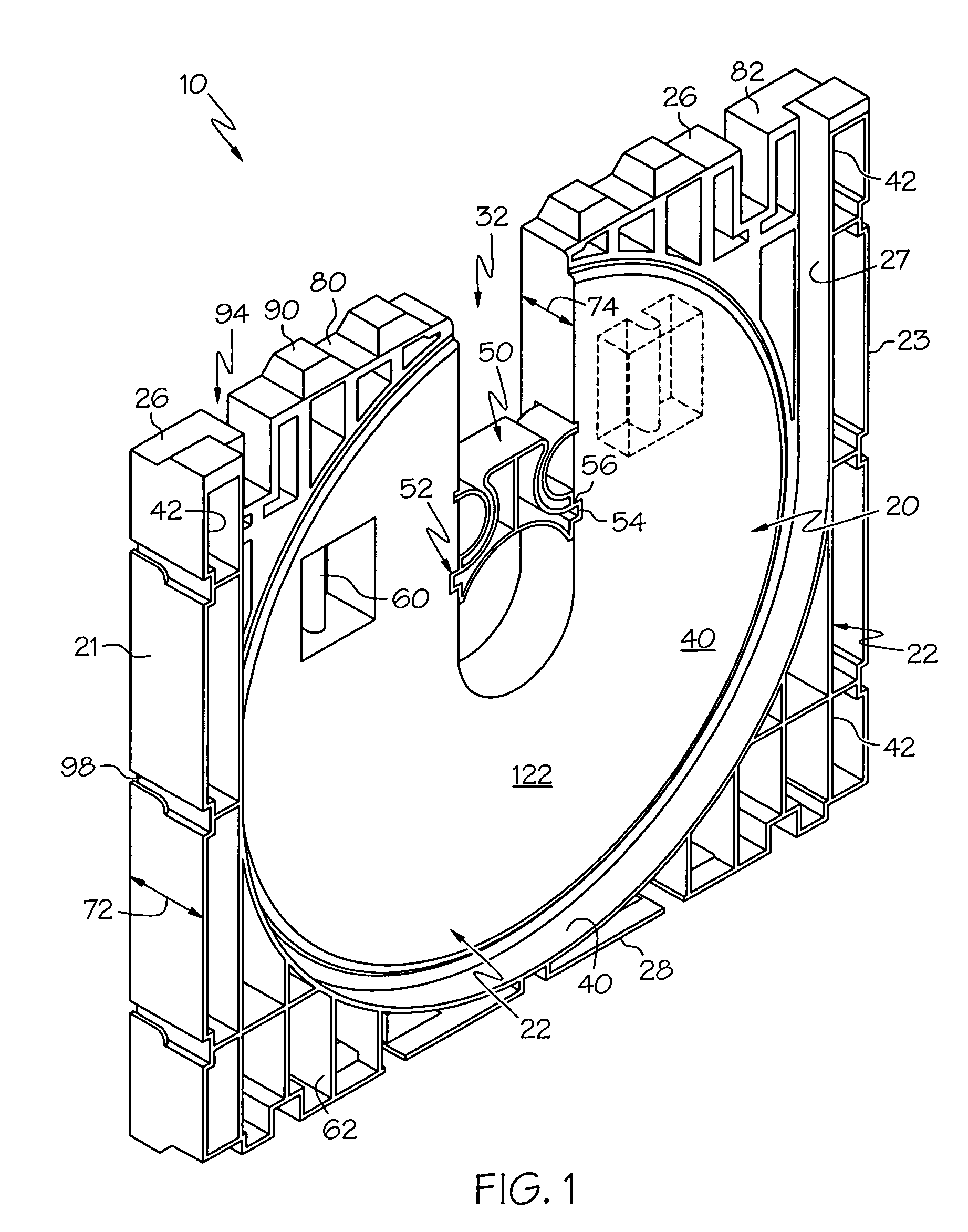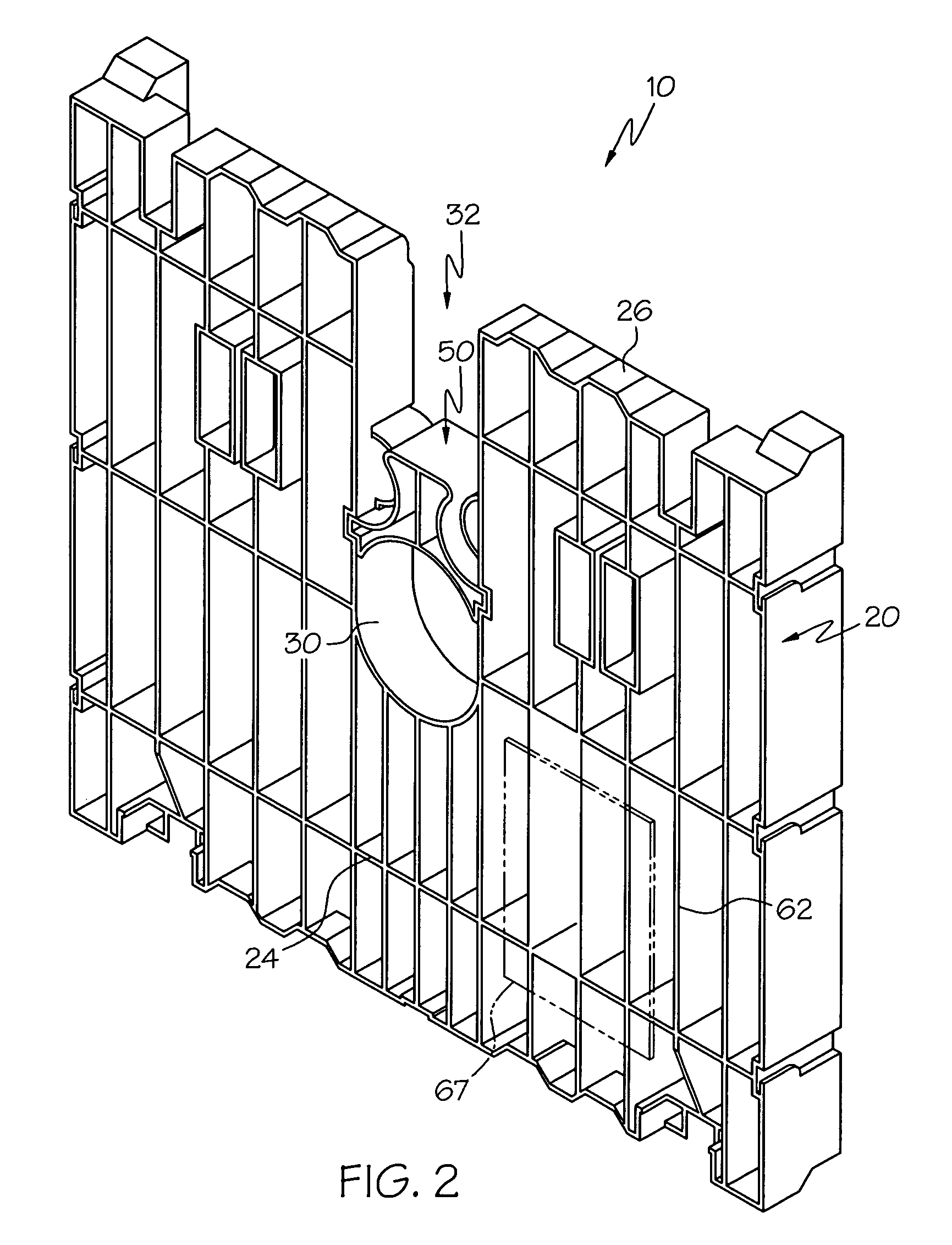End-board for a core-wound roll product packaging system
a technology of product packaging and end-board, which is applied in the direction of packaging, thin material processing, filament handling, etc., can solve the problems of large volume, time-consuming and laborious to prepare the rolls for use or further processing, and the packaging system requires significant space to store and manipulate the crated packages
- Summary
- Abstract
- Description
- Claims
- Application Information
AI Technical Summary
Benefits of technology
Problems solved by technology
Method used
Image
Examples
Embodiment Construction
[0039]End-boards according to the present invention provide unique functional features that overcome the limitations and undesirable properties of prior art end-boards. An end-board is provided that facilitates stacked lateral stability and free-standing lateral stability, without requiring laterally protruding foot members or additional cross-members for stabilizing the upper end-boards and roll in a stacked assembly. Further, end-boards according to this invention do not increase the overall width of a supported roll assembly as compared to prior art wooden end-boards. In addition to overcoming the deficiencies of prior art end-boards, the end-boards according to this invention also provide unique functional options.
[0040]The term “lateral” as used herein is defined to mean a direction substantially along the centerline or long axis of the core and including movement in a direction such as by a vertically erect end-board toppling over in an arc having a displacement component gene...
PUM
 Login to View More
Login to View More Abstract
Description
Claims
Application Information
 Login to View More
Login to View More - R&D
- Intellectual Property
- Life Sciences
- Materials
- Tech Scout
- Unparalleled Data Quality
- Higher Quality Content
- 60% Fewer Hallucinations
Browse by: Latest US Patents, China's latest patents, Technical Efficacy Thesaurus, Application Domain, Technology Topic, Popular Technical Reports.
© 2025 PatSnap. All rights reserved.Legal|Privacy policy|Modern Slavery Act Transparency Statement|Sitemap|About US| Contact US: help@patsnap.com



